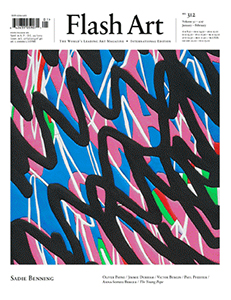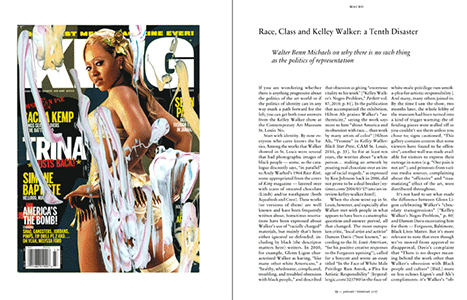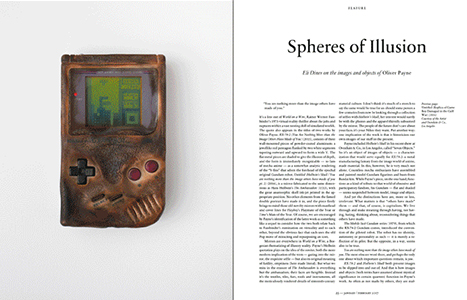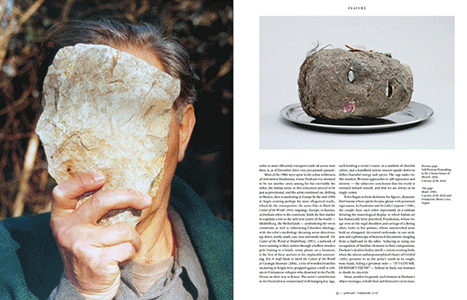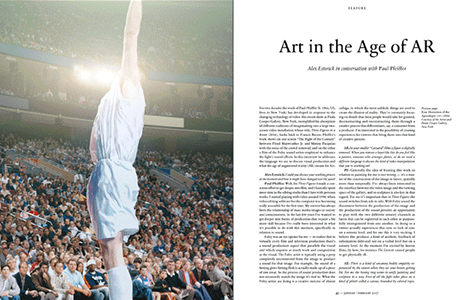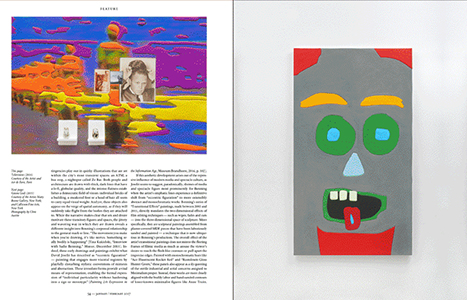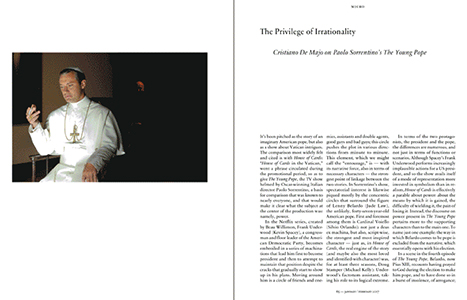A new year's issue with strong political contents, featuring:
Kelley Walker's new show,
Oliver Payne,
Jimmie Durham,
Anna-Sophie Berger, Paul Pfeiffer, Sadie Benning,
The Young Pope review,
Victor Burgin's 1984 article “Yes, Difference Again,”—in addition to the usual contents.
While reviewing past issues of
Flash Art, we stumbled upon an article by British artist
Victor Burgin discussing the show “Difference: On Representation and Sexuality,” held at the New Museum, New York, in 1984. According to the show's press release, it was premised on “recent interest in the issue of representation [that] has prompted many artists to explore the cultural formation of our notions of sexuality.” In Burgin's article, which we reprinted as this issue's “Time Machine,” he analyses in terms of the “difficulty of difference” the critical response against the “political conceptualism” embraced by many of the “Difference” artists, whose works were dismissed as
démodé during a time when formalist and expressionist fashions were ascendant. “What was at issue in the work was not a transient aesthetic form but a long-established semiotic form—text/image—encountered in most aspects of the everyday environment.” Defending his and his fellow artists' lack of concern with the development of a recognizable style, Burgin explains that “the work of such ‘works of art' was upon systems of representations which were not confined within the institutions and practices of ‘art.'” Amid the hostility encountered by the ‘Difference' works, Burgin discerned “a reflex refusal to admit difference that has more to do with our ‘large-scale' politics than we care to imagine.”
This issue of
Flash Art takes Burgin's meditation as a starting point to stimulate a discourse around difference within the current political climate. On the one hand, as theoretician Walter Benn Michaels suggests in this issue's “Macro,” reflecting on the recent
Kelley Walker show at CAM St. Louis, the politics of representation may be a red herring with regard to the problem of economic inequality and the critique of capitalism; on the other hand, artist
Jimmie Durham, also featured in this issue with an essay by Jennifer Piejko, boasts a lifelong engagement in civil rights struggles, mastering the “specificity of the political in art” that emerged through the political dissensus of Burgin and his fellow “political conceptualists.” To highlight a vivid distinction between the representation of politics and the politics of representation—both in art and in life—should be our goal for the year we are entering.
Flash Art is a contemporary art and culture magazine founded in 1967. Within a decade, it became an indispensable point of reference for artists, critics, collectors, galleries, and institutions. In 2020, Flash Art became a quarterly publication, at the same time increasing its trim size and updating its graphic identity. The magazine offers a fresh perspective on the visual arts, covering a range of transdisciplinary approaches and fostering in-depth analyses of artist practices and new cultural directions. Today, Flash Art remains required reading for all who navigate the international art scene.
Flash Art is known for it covers featuring artists who subsequently become leading figures in the art world. The magazine includes photoshoots, productions, critical essays, monographic profiles, conversations with emerging and established artists, and a range of ongoing and thematic columns that change every few years. The long history of the magazine is also highlighted by pivotal texts from the archive that are included in the publication time to time. Finally, every issue offers a highly curated selection of the best institutional exhibitions on the global scene.

